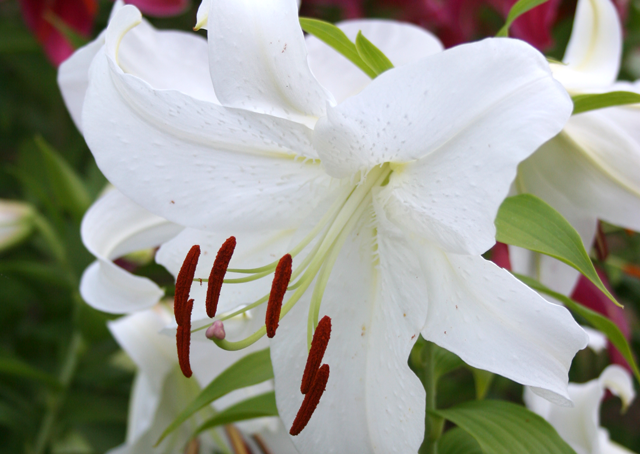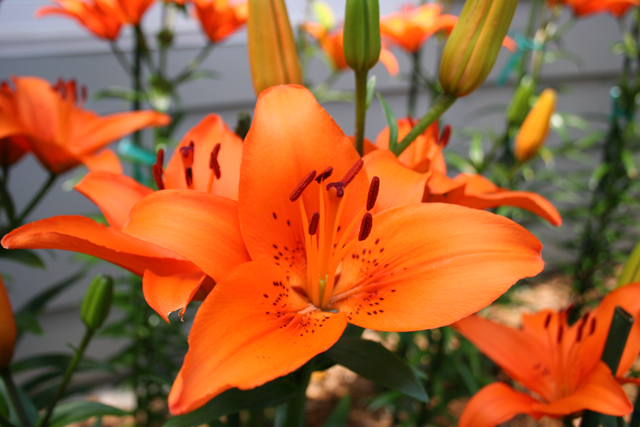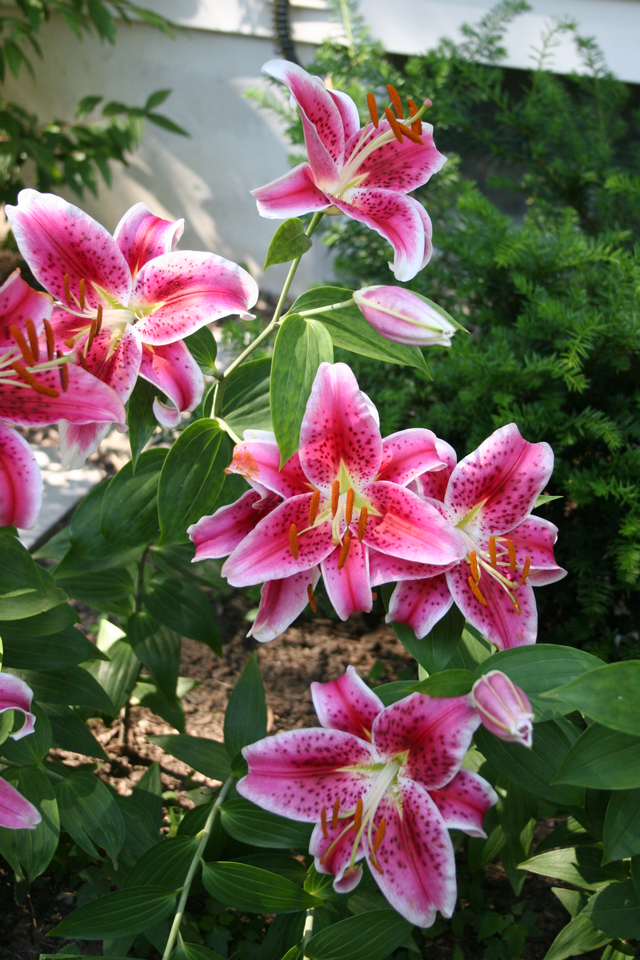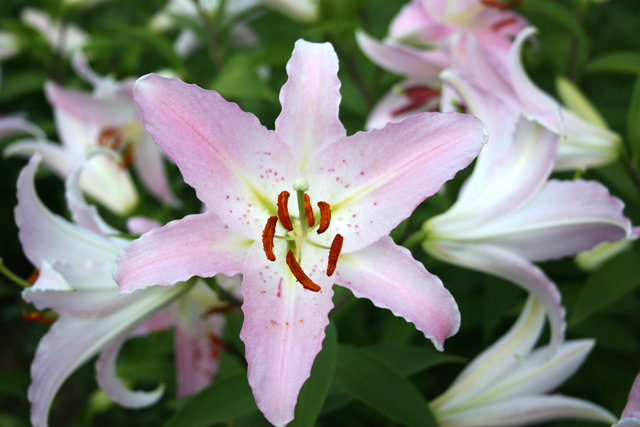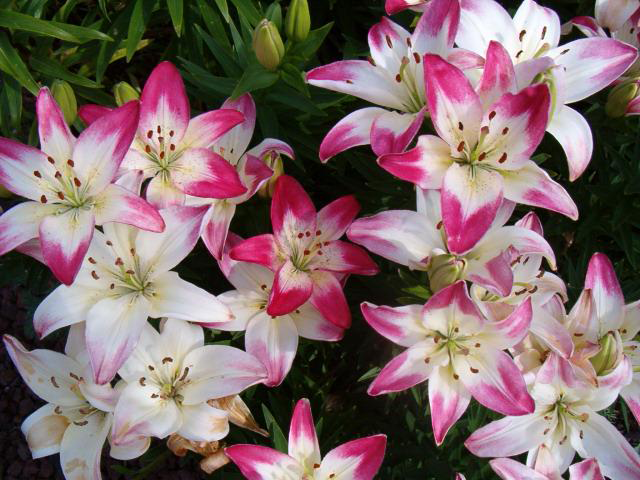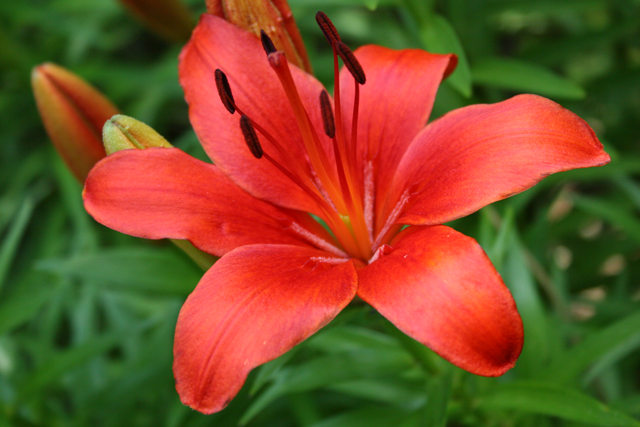Perhaps one of the most well-known bulbs and one of the world’s best cutflowers, both Oriental and Asiatic Lilies are known for their spectacular color displays as well as their often intense, sweet fragrance. In this article, we’ll review the advantages of using these beauties in your garden, as well as different planting techniques and tips for growing them.
Classification
As I mentioned, lilies are often remembered for their pleasant fragrance and their wonderful cutting ability. This can be said about both of the main classifications of lilies, Asiatics and Orientals, although Asiatics will not have as noticeable as a scent. Asiatic Lilies tend to bloom with more solid, bold colors and often have a bit smaller flower than the Orientals. They also bloom earlier than the Oriental Lilies, often one of the first in the summer blooming bulbs category in June to early July. The slightly shorter but more slender stature, as well as the ruffled edges to their petals make the Asiatic Lilies easy to identify. As for the Oriental Lilies, the flowers of these lilies are often speckled and bear multiple colors which fade in and out of the center. Oriental Lilies also bloom slightly later than the Asiatics, often in mid-July to early-August.
-
Growing Lilies
Both Asiatic and Oriental Lilies are sold as bulbs and often still bear some of last year’s roots on them when purchased. The end opposite the roots will have a slight point to it, which should be pointed “upwards” when planted in the ground. When selecting lily bulbs, be sure to test them for firmness, as any time of freezing of the bulb during transport will make it soft and not usable. Both Asiatic and Oriental Lilies prefer full to partial shade, but are not extremely tolerant of direct sunlight which causes extreme heat. They are hardy in Zones 3 to 8b/9a and can be grown in warmer zones when protected from the sun and heat and given adequate amounts of water. In fact, one of the greatest characteristics about lilies is that they will perennialize even in zones that receive harsh winters! This unfortunately cannot be said for many of the spring-planting bulbs.
Once you have selected a partially shaded to full sun location, be sure the soil is well-drained. If the soil in this area tends to be heavy or contain large amounts of clay, these bulbs will definitely benefit from amending the soil with organic materials such as peat moss and compost manure. If the bulbs are allowed to sit too wet, they will surely rot and turn to mush. Plant the bulbs pointed-side up approximately 4-6″ below the surface of the ground and water well. These bulbs should not need much supplemental watering from you unless a long drought period is experienced. Again, these bulbs are winter hardy and therefore can be left in the ground year round to come back year after year!
Both Asiatic and Oriental Lilies can also be grown in containers. When planting them in planters or pots, the same general rules of thumb apply. Place the pot in a partial to full sun location, be sure that the soil it contains is well-drained, and plant 4-6″ below the surface of the soil. One thing to keep in mind if you live in a cooler climate (Zones 7 or above): While these bulbs require the cool temperatures of the winter, allowing them to freeze while being exposed in an above-ground container is not advisable. To protect these bulbs from this severe freezing, either move the container into a cool garage, basement, or cellar, or wrap it in a quilt or a good amount of burlap. Once the weather begins to warm in the springtime, either move the container to the outdoors or unwrap the planter.
One of the best-loved and definitely the most fragrant of the summer blooming bulbs, the characteristics of the lily bulbs make then something you definitely won’t want to leave out of your garden. Easy to grow and wonderful for fresh cut arrangements, these bulbs will become one of your favorite of the garden and will come back year after year for you to enjoy!


